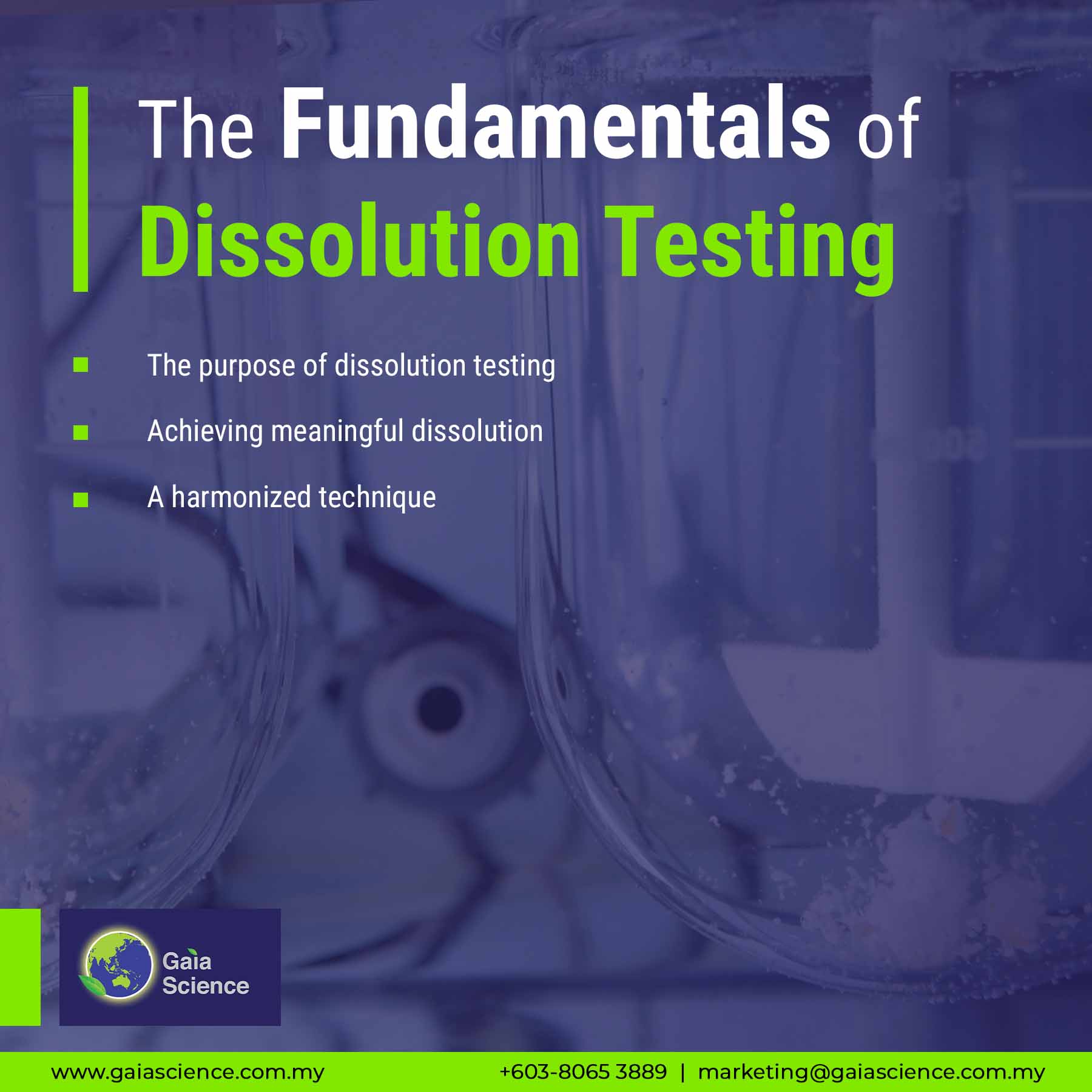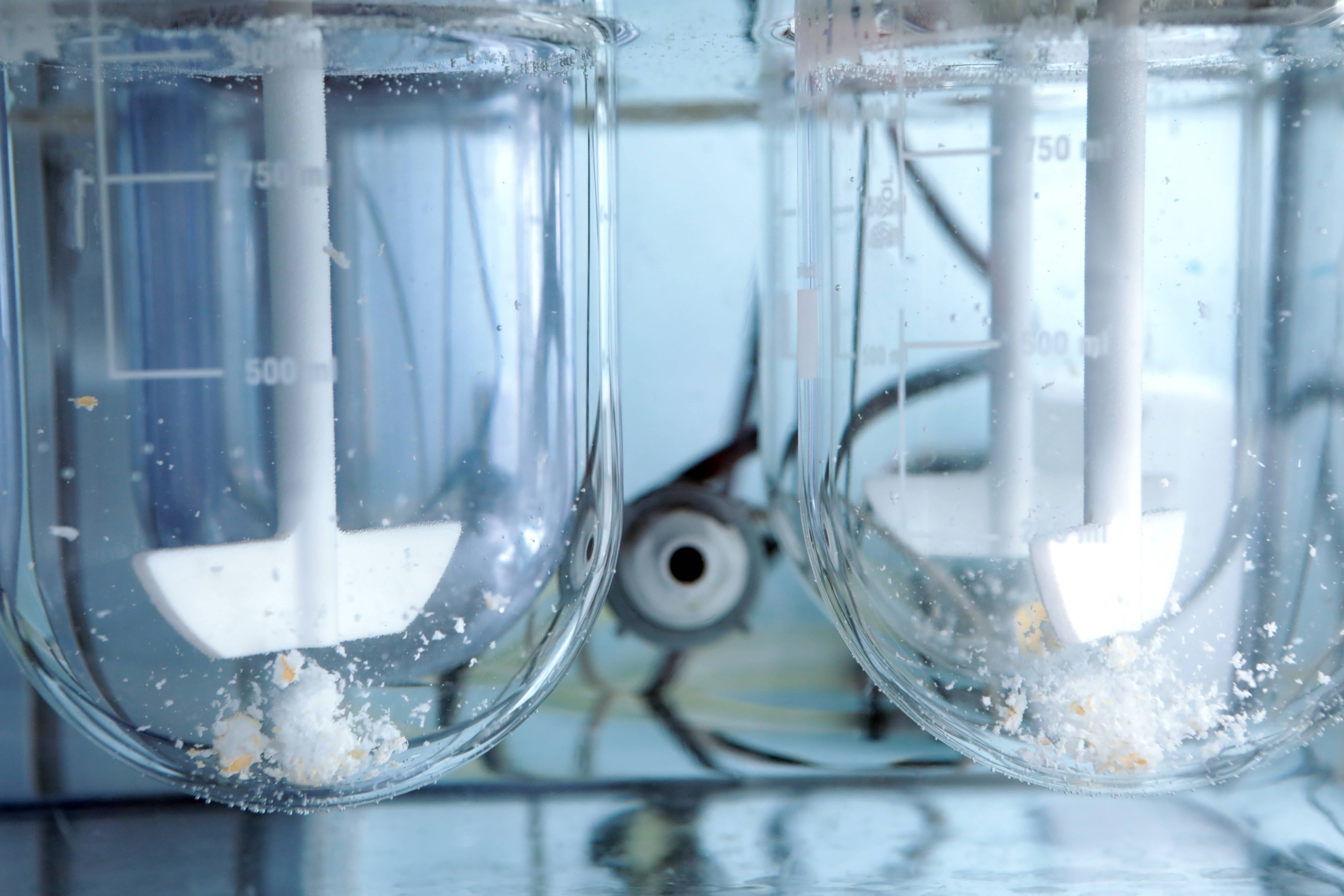News & Events - Details
The Fundamentals of Dissolution Testing
29 August 2022Oral dosage forms remain one of the most flexible and effective treatments available to patients. Historically, dissolution testing has been used primarily as a quality control (QC) test for solid oral drug products. Indeed, it is the only QC test which provides a measure of the quantitative release rate of the drug from the pharmaceutical product.
Dissolution testing is a requirement for all solid oral dosage forms and is used throughout the development life-cycle for product release and stability testing. It is a pivotal analytical test used for detecting physical changes in an active pharmaceutical ingredient and formulated product. At the early stages of the drug development process, in-vitro? dissolution testing underpins the optimisation of drug release from a given formulation. The effectiveness of an oral dosage form depends upon the intrinsic ability of the drug to dissolve in the fluids of the gastrointestinal tract before being absorbed into circulation. Therefore, the rate of dissolution of the tablet or capsule is pivotal to this process.
The purpose of dissolution testing
For a commercial product, this test is routinely used for quality-control and quality-assurance purposes, to ensure consistency between production batches, or to justify scale-up and post-approval changes made to the manufacturing process.
Product development
- Important tool during the development of dosage form
- Aids in guiding the selection of prototype formulations and determining optimum levels of ingredients to achieve drug release profiles, particularly for extended-release formulations.
- Also, guides in the selection of a “market-image” product to be used in pivotal in-vivo bioavailability or bioequivalence studies.
Quality Assurance
- D.T. is performed on future production lots and is used to assess the lot-to-lot performance characteristics of the drug product and provide continued assurance of product integrity/similarity.
Product Stability
- In-vitro dissolution is also used to assess drug product quality with respect to stability and shelf life. As product age, physicochemical changes to the dosage form may alter the dissolution characteristics of the drug product over time. For some products, polymorph transformations to more stable, and hence less soluble crystalline forms may result in reduced dissolution rates.
Comparability Assessment
- Also useful for assessing the impact of pre- or post-approval changes to drug products such as changes to formulation or manufacturing process. Thus, in-vitro comparability assessment is critical to ensure continued performance equivalency and product similarity.
Waivers Of In-vivo Bioequivalence Requirements
- In-vitro dissolution testing or drug release testing may be used for seeking a waiver of the required product to conduct in-vivo bioavailability or bioequivalence studies.
Achieving meaningful dissolution
In dissolution testing, the aim is to develop a discriminatory method that is sensitive to variables that affect the dissolution rate, and consequently, the in-vivo performance of the drug product. The method must be able to distinguish between drug products manufactured under target conditions and formulations with meaningful variations for the most relevant critical manufacturing variables, such as drug substance particle size, compression force, and tablet hardness, for example. The dissolution method should also be sufficiently rugged and reproducible for daily operations as well as transferable between laboratories.
The general procedure for a dissolution involves a liquid known as Dissolution Medium which is placed in the vessels of a dissolution unit. The medium can range from degassed or sonicated deionized water to pH-adjusted chemically-prepared solutions and mediums that are prepared with surfactants. The dissolution medium should be water or water-based having a pH in the range of 5-7 at 37 ºC and the medium to be used as per the product which is written in the standard test procedure of the respective product.
Degassing the dissolution medium through sonication or other means is important since the presence of dissolved gases may affect results so the drug is placed within the medium in the vessels after it has reached sufficient temperature and then the dissolution apparatus is operated.
Sample solutions collected from dissolution testing are commonly analyzed by HPLC and Ultraviolet-visible spectroscopy.
There are criteria known as release specifications that samples tested must meet statistically, both as individual values and as the average of the whole and one such criterion is the parameter “Q”, which is a percentage value denoting the quantity of dissolved active ingredient within the monograph of a sample solution.
If the initial sample analysis, known as S1 or stage 1 testing fails to meet the acceptable value for Q, then additional testing known as stage 2 and 3 testings are required. S3 testing is performed only if S2 testing still fails the Q parameter. If there is a deviation from the acceptable Q values at S3, then an OOS (Out of Specification) investigation is generally initiated.
A harmonized technique
Globally, various pharmacopoeias provide clear outlines for apparatus, procedures, and evaluations that will help developers to fulfil the dissolution testing criteria of regulatory bodies. For example, USP has several chapters, including 711, 1092, and 1225, detailing preliminary assessments, method development, analysis, automation, validation, and acceptance criteria (1–3). In European Pharmacopoeia section 2.9.3 (4), developers can find information on apparatus, procedures, and evaluations for acceptance criteria also. Further information can also be found on the physical operating conditions of the dissolution testers with guidelines covering dissolution testing for immediate release, delayed release, and extended-release drug formulation types. However, given the complexities of the human body, physiology, and chemical/biological interactions that take place, it can be difficult to solely rely on the dissolution test as a way of predicting how a drug formulation may perform in vivo. The use of biorelevant media can aid such assessments, but there is no way of understanding how closely the dissolution test may predict in-vivo performance without performing clinical studies.
In summary, the design of a suitable dissolution procedure must take into consideration many parameters spanning the API, formulation and analytical method. In-vitro? dissolution testing should provide a robust body of data in order to assure product performance and quality. Throughout the process, it is important to ensure that the in-vitro? dissolution resembles in-vivo? conditions. If the dissolution procedure is designed effectively, it will accelerate drug development, and ideally, reduce the need for human studies.
Want to have a chat about the dissolution system? We're here to assist you in choosing the best solution for your applications.
Browse through our solutions for the pharmaceutical industry.


 SingaporeSG
SingaporeSG ChinaCN
ChinaCN MalaysiaMY
MalaysiaMY IndonesiaID
IndonesiaID MyanmarMM
MyanmarMM
